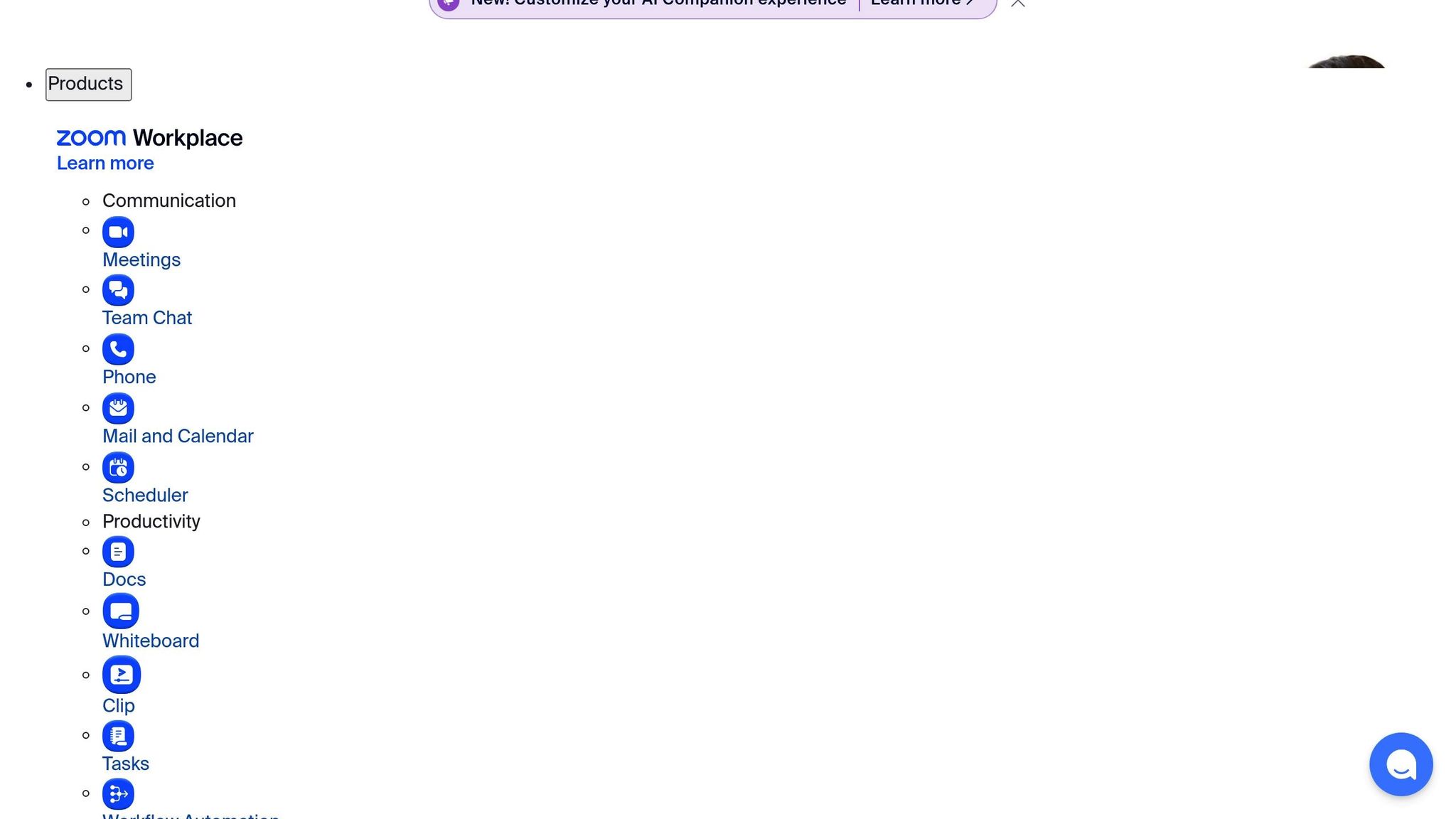Zoom vs. Microsoft Teams: Translation Features Compared
Looking for the best translation features in your translation tool for your global team? Here is a quick comparison of Zoom and Microsoft Teams, two popular platforms with real-time translation features.
- Zoom: Offers human interpreter services for up to 12 languages. Best for high-stakes events needing precise, context-aware translations. Requires setup before meetings and comes with additional costs.
- Microsoft Teams: Provides AI-powered live captions in 36 languages and chat translation in 44 languages. Easy to use, included with Microsoft 365, and great for automated multilingual collaboration.
Translation Features: Quick Comparison
| Feature | Zoom | Microsoft Teams |
|---|---|---|
| Language Support | 12 languages | 36 live captions, 44 chat languages |
| Setup Process | Pre-meeting interpreter setup | Instant activation, no setup needed |
| Translation Method | Human interpreters | AI-powered captions and chat |
| Response Time | Near real-time (interpreter) | 2-3 seconds |
| User Interface | Separate audio channels | Integrated captions and chat |
| Cost | Paid add-on | Included with Microsoft 365 |
Choose Zoom if you need precision for conferences, legal, or medical discussions.
Choose Microsoft Teams for automated, budget-friendly multilingual communication.
Translation Features: Live Translated Captions for Microsoft Teams
Translation Features at a Glance
Zoom and Microsoft Teams both provide real-time translation options. Zoom relies on a built-in interpreter to create separate language channels, while Teams uses Azure AI to offer live captions and inline translation directly within the meeting interface.
Setting Up Translation
In Zoom, hosts need to enable interpretation in their settings and assign interpreters before the meeting starts. On the other hand, Teams simplifies the process – translation features are automatically available for Microsoft 365 users, allowing participants to activate captions or inline translations without any prior setup. Up next, we’ll dive into the language support offered by each platform.
Available Languages in Translation Features
Once setup is done, the choice of supported languages plays a big role in how widely a platform can be used.
Translation Features: Zoom Language Support

Zoom allows interpretation in 12 languages. Hosts can assign interpreters before meetings or webinars begin. During the session, participants can choose between the original audio or the interpreted version.
Microsoft Teams Language Support
Microsoft Teams provides live captions in 36 languages and chat translation in 44 languages. Meeting participants can pick their preferred caption language or enable chat translations directly within the meeting interface, ensuring smoother communication across different languages.
Next, we’ll take a closer look at how these platforms perform in real meetings, focusing on accuracy and speed.
sbb-itb-32359dc
Translation Features: Quality and Response Time
The accuracy and speed of translations depend on several factors: network stability, the speaker’s accent, background noise, and the use of specialized terms. Let’s take a closer look at how Zoom and Teams perform under these conditions during live meetings.
Translation Features: Ease of Use
Using Zoom Translation
Hosts can set up interpretation before the meeting starts. Once the session begins, participants simply click the interpretation icon in the toolbar and pick their preferred audio channel.
Using Microsoft Teams Translation
Microsoft Teams offers live captions and subtitles for translation. To activate, open More actions (⋯), select Turn on live captions and subtitles, and then choose your desired language.
Below is a comparison of these controls in a side-by-side table for clarity.
Translation Features: Comparison Table
Here’s a side-by-side breakdown of key translation features for both platforms:
| Feature | Zoom | Microsoft Teams |
|---|---|---|
| Language Support | 12 languages | 36 live captions, 44 chat languages |
| Setup Process | Requires pre-meeting interpreter assignment | Instant activation, no setup needed |
| Translation Method | Human interpreters | Azure AI-powered |
| Response Time | Near real-time (depends on interpreter) | 2-3 seconds |
| User Interface | Separate audio channels | Integrated captions and chat translation |
| Cost | Paid add-on feature | Included with Microsoft 365 |
| Offline Support | Available with interpreter | Requires an internet connection |
These details are based on real-world scenarios discussed in our Quality and Response Time section.
Conclusion
Microsoft Teams provides AI-powered captions in 36 languages and chat translation in 44 languages, all included with Microsoft 365. Its ease of use and wide language support make it a budget-friendly option for automated multilingual meetings.
On the other hand, Zoom offers human interpreter services, delivering context-rich, nuanced translations. This makes it a better fit for high-stakes events, though it requires pre-scheduled certified interpreters and comes with additional costs.
Consider your needs – automation versus precision – and refer to our Feature Comparison Table to make the best decision.
Choose Zoom for:
- Professional conferences where accuracy is crucial
- Medical or legal discussions requiring precise terminology
- Events that demand cultural and contextual sensitivity
To further enhance your multilingual communication, refine your materials with BeLikeNative‘s in-context translation and style tools.


